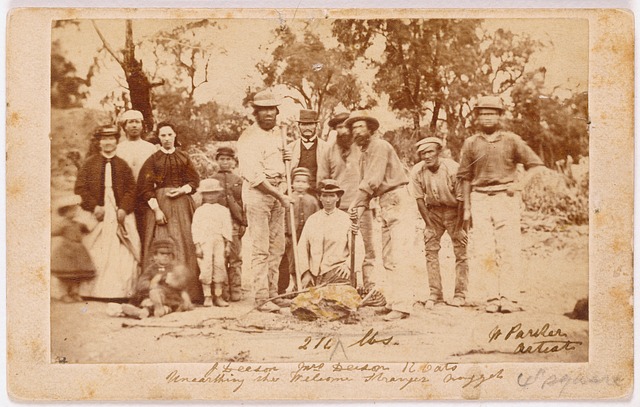401(k) plan holders interested in converting their savings into physical gold and silver should first verify the eligibility of their plan for rollovers, which is typically triggered by job termination. Some plans may allow in-service withdrawals for this purpose. It's essential to review plan terms or consult with a professional to ensure compliance with IRS regulations on rollovers. When transitioning to a self-directed IRA that invests in precious metals, careful selection of a custodian who adheres to IRS standards and offers secure storage solutions is crucial. Investors must assess the types of precious metals accepted, consider transaction and storage fees, and evaluate the custodian's reputation and track record. A trustee-to-trustee transfer is the method for converting traditional or Roth 401(k)s to a Precious Metals IRA without jeopardizing the tax-advantaged status of the funds. The acquisition of physical gold and silver through coins, bars, and bullion requires engagement with reputable dealers who comply with IRS regulations for IRA investments. Investors must also secure storage and insurance for their physical holdings and stay informed about market dynamics to maintain a cost-effective and secure investment. Tax implications, including potential income taxes and penalties, must be considered during the rollover process, and strategic planning with expert guidance is necessary to minimize tax burdens and ensure compliance.
Considering the transformative potential of converting a 401(k) to physical gold and silver, this article navigates the pivotal steps involved in this process. Before embarking on this journey, it’s crucial to ascertain if your 401(k) plan permits rollovers—a prerequisite for transferring your retirement savings. Whether you’ve transitioned to a new job or your existing plan facilitates in-service withdrawals, understanding the mechanisms and selecting the right custodian are key steps. The subsequent phases include initiating the rollover to a precious metals IRA, carefully choosing your gold and silver holdings, and strategically managing tax considerations to ensure a secure and advantageous investment strategy. Dive into this guide to transform your retirement savings into tangible assets that could potentially offer both wealth preservation and long-term growth benefits.
- Understanding Rollover Eligibility for 401(k) Plans
- Comparing Custodians for Gold and Silver IRAs
- Initiating the Rollover from 401(k) to Precious Metals IRA
- Selecting Physical Gold and Silver Holdings
- Managing Tax Implications in a Gold and Silver I
Understanding Rollover Eligibility for 401(k) Plans

When considering the conversion of your 401(k) savings into physical gold and silver, it’s crucial to first ascertain the eligibility of your plan for rollovers. Not all 401(k) plans permit this type of distribution, so checking with your plan administrator or consulting the plan document is a necessary initial step. Typically, you become eligible for a rollover after leaving your job, either through retirement, resignation, or termination of employment. Additionally, some plans may allow for in-service withdrawals, which enable you to access your funds without formally separating from service. This option is subject to the specific rules of your plan and can often be utilized for rollovers into other qualified plans, including certain types of IRAs that hold gold and precious metals. It’s important to carefully review your plan’s terms and conditions or seek professional advice to understand your options and ensure compliance with IRS regulations regarding rollovers. This due diligence is essential to navigate the process smoothly and maintain the tax-advantaged status of your retirement savings.
Comparing Custodians for Gold and Silver IRAs

When considering the conversion of a traditional IRA to a self-directed IRA that holds physical gold and silver, comparing custodians is a critical step. Each custodian specializing in precious metals IRAs offers varying advantages and services. It’s imperative to research the credibility of potential custodians, their experience with IRS regulations, and their reputation for secure storage. Look into the types of precious metals they allow within your IRA, as not all metals are eligible for IRS-approved holdings. Additionally, consider their transaction fees, storage fees, and whether they provide insured and segregated storage options to safeguard your assets against market volatility and other risks. The choice of custodian can significantly impact the security, liquidity, and overall effectiveness of your investment strategy, making this decision a pivotal aspect of successfully transitioning your 401(k) into a physical gold and silver IRA.
Initiating the Rollover from 401(k) to Precious Metals IRA

To initiate a rollover from a traditional or Roth 401(k) to a Precious Metals IRA, the process begins with a direct transfer between financial institutions. This type of transfer is commonly referred to as a “trustee-to-trustee transfer” and ensures that the funds are moved directly from your existing 401(k) plan to your new Precious Metals IRA without passing through your hands, thus maintaining the tax-advantaged status of the assets. It’s crucial to work closely with both your current 401(k) plan administrator and the Precious Metals IRA custodian to facilitate this transfer. They will provide you with the necessary forms and guidance to complete the rollover smoothly. Upon completion, the funds in your new account are allocated according to your investment choices, which now include physical gold and silver coins or bars that meet the Internal Revenue Service (IRS) standards for IRA investments. Ensure that you adhere strictly to IRS rules regarding rollovers to avoid any unintended tax consequences or penalties.
Selecting Physical Gold and Silver Holdings

When considering the conversion of a 401(k) to physical gold and silver, it is crucial to explore the various options for acquiring these precious metals. Physical holdings of gold and silver can take the form of coins, bars, or bullion, each with its own benefits and considerations. For instance, coins and bars are easily divisible, making them more liquid than larger ingots or bars, which may be more suitable for long-term storage. Investors should select a reputable dealer for purchases, ensuring compliance with Internal Revenue Service (IRS) regulations regarding IRA investments in precious metals. The IRS mandates that these metals meet certain fineness requirements to be eligible for IRA investment; thus, due diligence is essential. Additionally, storage and insurance of the physical holdings must be arranged by the investor, as opposed to the custodial services typically provided within a 401(k) plan. This requires careful planning to maintain the security and integrity of the investment. It’s also important to keep abreast of market conditions and storage costs, as these can impact the overall performance and cost-efficiency of your gold and silver holdings.
Managing Tax Implications in a Gold and Silver I

When considering the conversion of a 401(k) into physical gold and silver, managing tax implications is paramount. The Internal Revenue Service (IRS) treats this distribution as a normal withdrawal, meaning it’s subject to income taxes. However, if you are under the age of 59½, an additional 10% early withdrawal penalty may apply unless an exception applies. It’s crucial to understand these tax consequences before proceeding with the rollover to avoid unnecessary penalties.
To effectively manage tax implications, you should carefully plan and time your rollover. You have the option to roll over your 401(k) funds into a Traditional Individual Retirement Account (IRA) that allows for physical gold and silver investments. This step can provide a tax-advantaged environment for your precious metals investment, as Roth IRAs offer tax-free growth, provided certain conditions are met. Additionally, you must adhere to IRS rollover rules, which include a 60-day window for completing the transaction without triggering a taxable event. Consulting with a tax professional or financial advisor who specializes in retirement accounts and alternative investments is highly recommended to navigate these complexities and ensure compliance with all applicable laws and regulations.
In transitioning a 401(k) to physical gold and silver, the process is both strategic and compliant. To summarize, one must first ascertain their plan’s rollover eligibility. This can be done post-employment or by leveraging in-service withdrawal provisions if available. Once eligible, selecting a reputable custodian for a Gold or Silver IRA is crucial. Subsequently, careful consideration of the metals to purchase is necessary, ensuring they meet the IRS’s purity standards. Throughout this process, it is essential to navigate tax obligations diligently. By adhering to these steps and understanding each phase, from rollover eligibility to asset selection and tax management, individuals can effectively diversify their retirement savings with precious metals, potentially safeguarding against inflation and market volatility.
